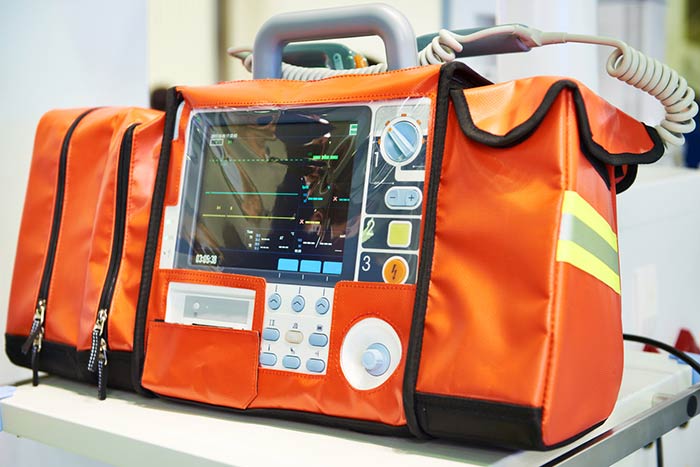CPR is a technique used to keep victims of sudden cardiac arrest alive and to prevent brain damage until medical professionals arrive. In conjunction with a portable defibrillator, it is the difference between life and death in the event of sudden cardiac arrest (SCA). SCA can affect anyone, anywhere, at any time so having the knowledge and skills to perform CPR and access to a portable AED/defibrillator is essential. Safety Dave supplies premium yet affordable safety equipment including a workplace defibrillator, TPMS and reversing cameras. Here we will look at CPR and how it can save lives.
Sudden Cardiac Arrest Vs Heart Attack
Many people interchange SCA with a heart attack, however they are not the same.
Sudden cardiac arrest – occurs when the heart abruptly stops pumping due to an interruption of normal heart impulses.
Heart attack – is the final stage of heart disease which slows and then stops blood flow to the heart muscle.
A heart attack can sometimes cause a cardiac arrest. Urgent medical attention is required at the first sign of chest pain to prevent a cardiac arrest.
How Does CPR Help Victims Survive?
The goal of CPR (cardio-pulmonary resuscitation) is to keep oxygen flowing in and out of the lungs and to keep oxygenated blood flowing through the body. This keeps tissues in the body
alive and functioning. Every second counts when a person is in cardiac arrest. Without chest compressions and use of a defibrillator, a victim will not survive. CPR can double or triple the chances of survival.
How To Tell if You Should Begin CPR?
If someone collapses suddenly, is unconscious and does not appear to be breathing properly, you should start CPR chest compressions.
- Assess the area and make sure it is safe to approach the person.
- Confirm unresponsiveness – tap the person and ask them a question. You can also check for a pulse.
- If no response, call 000 immediately, and being CPR.
Chest compressions are now the first line response rather than mouth-to-mouth rescue breathing. High-quality chest compressions are critical.
- As a rule of thumb “push hard and push fast on the centre of the chest”.
- Compress the chest at least 2 inches with each down-stroke – do not be afraid to apply force. You need to replace the heartbeat and get blood pumping.
- Compress at a rate of 100-120 compressions per minute.
TIP: To ensure an appropriate rate, thinking of a song may help. The Bee Gees “Stayin’ Alive” is the right tempo. “Girls Just Want to Have Fun” by Cyndi Lauper is also in the 100 to 120 beats-per-minute range.
With AEDs, or defibrillators increasingly common in public places, it is likely that one may be nearby. Begin CPR right away, and shout for someone to find a defibrillator. Even without a portable defibrillator, CPR can help a person survive until professional medical attention arrives.
Improve Safety with a Workplace Defibrillator
Sudden cardiac arrest can happen anywhere, including in the workplace. Ensuring your staff have access to a portable defibrillator could be the difference between one of your employees surviving a cardiac arrest or not. Shop the range at Safety Dave and find the best safety solutions for your business today. Shop online or get in touch with us by calling 1800 072 338 now.


